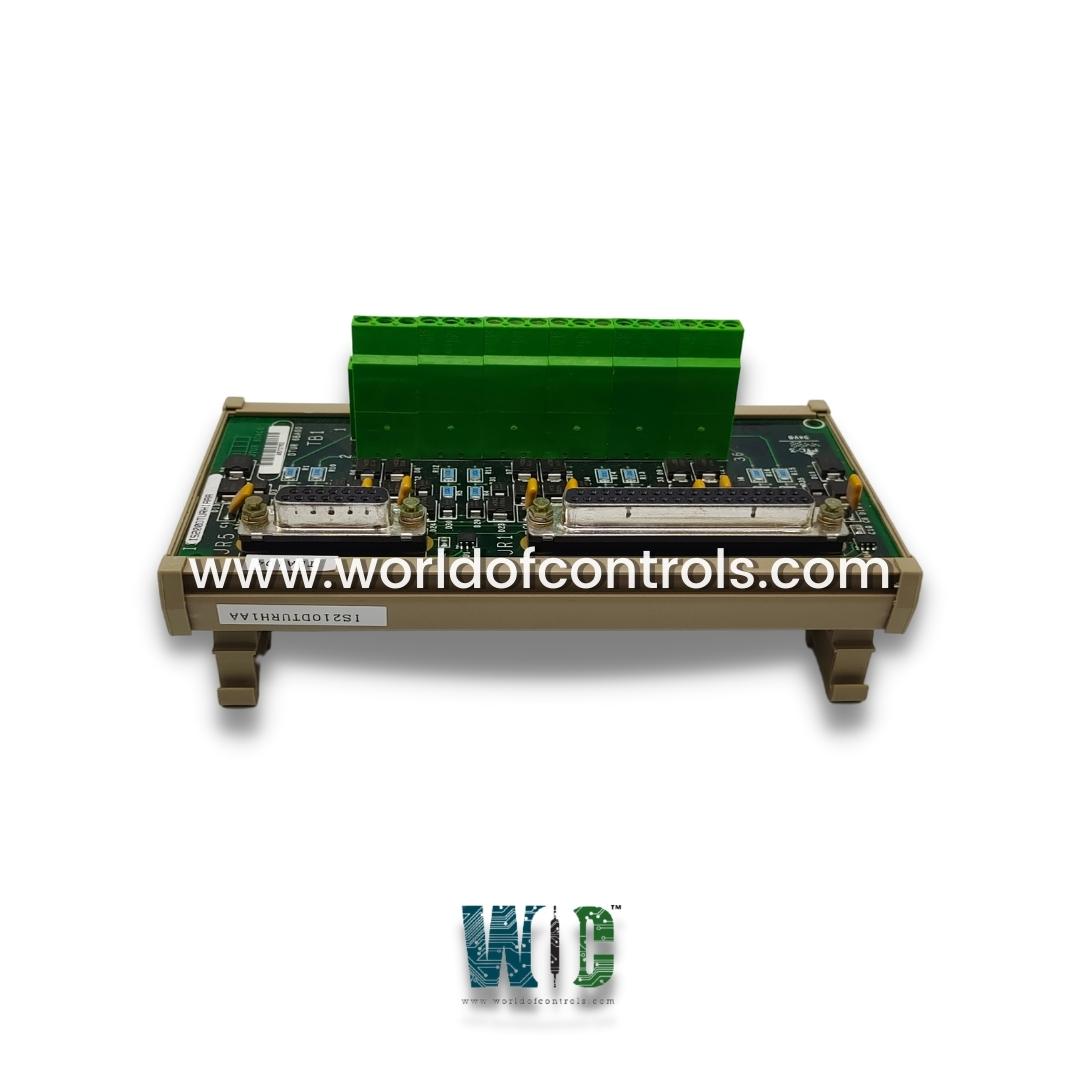SPECIFICATIONS
Part No.: IS210DTURH1AA
Manufacturer: General Electric
Country of Manufacture: United States of America (USA)
Number of Channels: 4
Technology: Surface mount
Temperature Operating: -30 to 65oC
Product Type: Pulse Rate Terminal Board
Availability: In Stock
Series: Mark VI
Functional Description
IS210DTURH1AA is a pulse rate terminal board developed by GE. It is a part of Mark VI series. This specialized terminal board is engineered for accurate pulse-rate measurement, making it an essential component for speed and flow monitoring applications. Its design enables the seamless integration of magnetic pickups, offering high-precision data collection for speed and flow within control systems and industrial environments. Specifically crafted for DIN-rail mounting and operates solely in a simplex configuration.
Features
- Engineered with a compact form factor, it ideal for space-constrained installations. Its size and design allow for easy integration into control system cabinets, contributing to overall space optimization in industrial environments.
- Specifically designed for DIN-rail mounting, the terminal board simplifies installation within a variety of industrial and control cabinet setups. The DIN-rail configuration ensures secure, standardized mounting, contributing to overall ease of installation and system integration.
- The board is capable of accommodating up to four passive pulse-rate transducers, specifically magnetic pickups. These pickups allow the terminal board to accurately measure speed and flow, providing critical data needed for system control and performance monitoring. This makes the board highly effective for applications requiring precision in speed and flow measurements.
- The terminal board is designed to integrate seamlessly with the VTUR processor board. This connectivity is established through two specific cables: a 37-pin cable and a 15-pin cable. These cables are identical to those used with the larger TTUR terminal board, ensuring consistent, standardized connectivity across different terminal board models within the Mark VI system.
- The VTUR board is designed to accommodate only a single DTUR board, ensuring a one-to-one connection between the two boards. This dedicated setup facilitates reliable communication and data exchange between the pulse-rate terminal board and the processor board, ensuring accurate monitoring and control.
Standardized Connectivity:
- The 37-pin and 15-pin cables used for connections between the DTURH1AA and VTUR processor board mirror those used in the larger TTUR terminal board. This standardized approach simplifies maintenance and system integration, ensuring compatibility across different terminal boards in the Mark VI system.
Specialized Design for Pulse Rate-Based Systems
Mounting and Configuration
- Mounting Type: Exclusively DIN-Rail mountable, ensuring easy integration into various setups while optimizing space utilization.
- Availability: Solely offered in a simplex version, providing a streamlined and simplified version for specific applications.
Magnetic Pickup Integration
- Functionality: Capable of accepting magnetic pickups specifically intended for flow and speed measurements.
- Pulse Rate Transducers: Incorporates four pulse-rate transducers or magnetic pickups to facilitate precise speed and flow measurements.
Integration with Main Processor Board (VTUR I/O Termination)
- Primary Processor Board: DTUR primarily interfaces with the VTUR I/O Termination Board.
- Connection Options: Allows connection of up to two DTUR models to the VTUR board, enhancing flexibility in system configuration.
Comparison with TTUR Board
- Relationship with TTUR: The DTUR model shares similarity with the TTUR board, primarily used for VTUR I/O termination.
- Differences from TTUR: Notably, the TTUR board includes synch relays, two PTs (Potential Transformers), and two SVMs (Switched Voltage Modules) alongside the four pulse rates. Additionally, the DTUR model lacks these components.
Terminal Block and Connectors
- Euro Block Terminal: Features a permanently mounted Euro block-type terminal block located at the board's bottom, equipped with thirty-six terminals.
Wiring Specifications: Utilizes shielded twisted pairing labeled as #18 AWG, ensuring optimal wiring compatibility.
- Sub-D Pin Connectors: Incorporates two sub-D pin connectors: JR5, utilized for cabling to the VTUR board, and JR1, featuring latching fasteners, intended for connection to the J3 connector on the VTUR board.
The WOC team is always available to help you with your Mark VI requirements. For more information, please contact WOC.
Frequently Asked Questions
What is IS210DTURH1AA?
It is a pulse rate terminal board developed by GE under the Mark VI series.
How does the VTUR interact with the ID device in JR1 and JR5 connectors?
VTUR, during operation, reads the information stored in the read-only chip embedded within connectors JR1 and JR5.
What happens if a mismatch is detected between the information read from the ID device and the expected data by VTUR?
In the event of a discrepancy or mismatch between the data read by VTUR and the expected information, it triggers a hardware incompatibility fault.
What does a hardware incompatibility fault imply?
Encountering a hardware incompatibility fault signifies that there is a discrepancy between the expected and actual board information. This fault serves as an alert mechanism, indicating a potential issue with the board's compatibility or identification.
How critical is the detection of a hardware incompatibility fault in terms of system operation?
Detecting a hardware incompatibility fault is crucial as it flags a potential issue in the connectivity or identification of the terminal board. Resolving this fault is important to ensure proper functionality and compatibility within the system.
